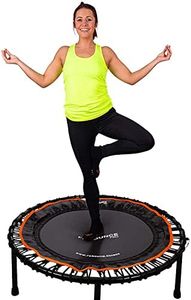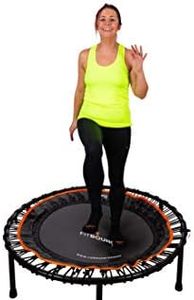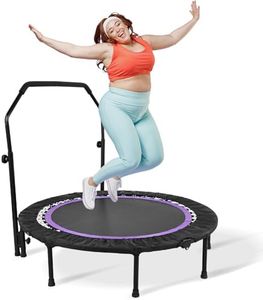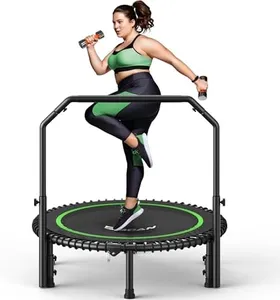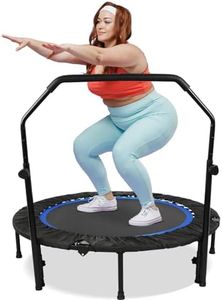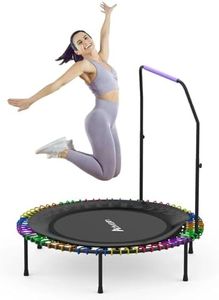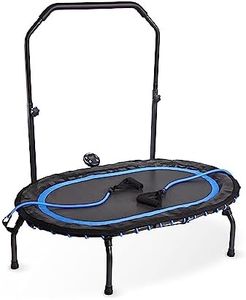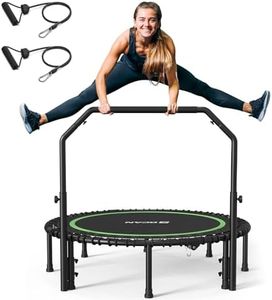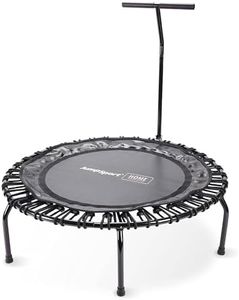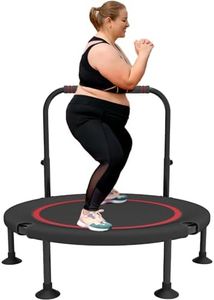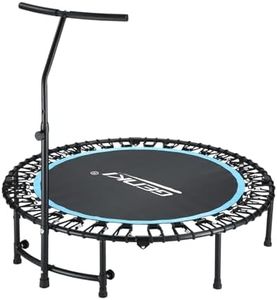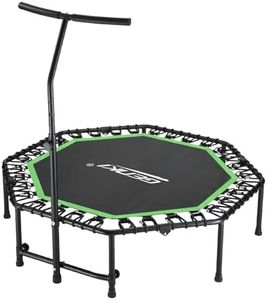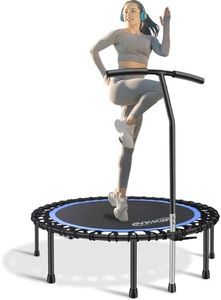We Use CookiesWe use cookies to enhance the security, performance,
functionality and for analytical and promotional activities. By continuing to browse this site you
are agreeing to our privacy policy
10 Best Rebounders
From leading brands and best sellers available on the web.By clicking on a link to a third party's website, log data is shared with that third party.
Buying Guide for the Best Rebounders
Choosing a rebounder, also known as a mini trampoline, can make a real difference in your home fitness routine. To pick the best one for your needs, it's important to understand how different features can affect your comfort, safety, and workout goals. Carefully consider where you'll use it, whether you prefer gentle bouncing or high-intensity exercises, and if you'll be moving it or leaving it in one spot. By paying attention to the main specifications, you can ensure your rebounder matches your space, strength, and style of exercise.Weight CapacityWeight capacity tells you the maximum weight the rebounder can safely support. This is very important for ensuring safety and longevity, as exceeding this limit can cause the frame or mat to wear out or break. Weight capacities are generally divided into light-duty (up to about 200 lbs), medium-duty (up to 250-300 lbs), and heavy-duty (over 300 lbs). To pick the right one, consider the weight of the heaviest person who will use it and always choose a rebounder that comfortably supports that weight with some extra margin.
Mat Size (Diameter)Mat size, usually measured in inches across, determines how much area you have to bounce on. Smaller rebounders (around 36-38 inches) are more portable and fit better in tight spaces, making them suitable for gentle exercises or limited rooms. Medium (about 40-44 inches) and large sizes (over 45 inches) offer more space for movement, which is better for a wider range of exercises and taller users. Think about your workout style and available space—choose a size that allows you to move safely and comfortably.
Type of Springs or Bungee BandsThe bouncing mechanism can be traditional steel springs or modern bungee cords. Steel springs provide a firmer, higher bounce which is good for more intense, aerobic workouts, but could be a bit jarring on joints. Bungee bands offer a softer, quieter bounce that's gentler on the body, preferred for low-impact or lymphatic exercises. If joint comfort is a priority or you want a quieter workout, look for bungee-style rebounders. If you prefer more resistance and vigor, steel springs may be better.
Adjustable or Fixed LegsRebounder legs can either be fixed in place or foldable/adjustable. Fixed legs are usually sturdier but make storage and transport more cumbersome. Foldable legs are convenient for saving space and frequent moving, but sometimes feel a bit less stable. If you need to store your rebounder between uses or travel with it, folding legs are a good choice; if it stays in one spot, fixed legs may be the better option for maximum stability.
Mat MaterialThe mat is where you'll be landing with every bounce, so its material greatly impacts durability and comfort. Mats are typically made from polypropylene or similar synthetic fabrics, which means they're strong and resistant to stretching. Higher-quality mats last longer and feel smoother underfoot. If you anticipate daily or vigorous use, opt for mats advertised as UV-resistant or heavy-duty for longer life. Consider your exercise intensity and make sure the mat feels secure and comfortable.
Stability and Safety FeaturesAdditional safety features, such as non-slip feet or optional handle bars, help prevent slips and provide extra balance, especially for beginners or those with mobility concerns. Some rebounders include padded frames to prevent injuries if you misstep. Think honestly about your balance, experience level, and who will be using the rebounder—the more stability features included, the safer the experience, particularly for seniors or new users.
